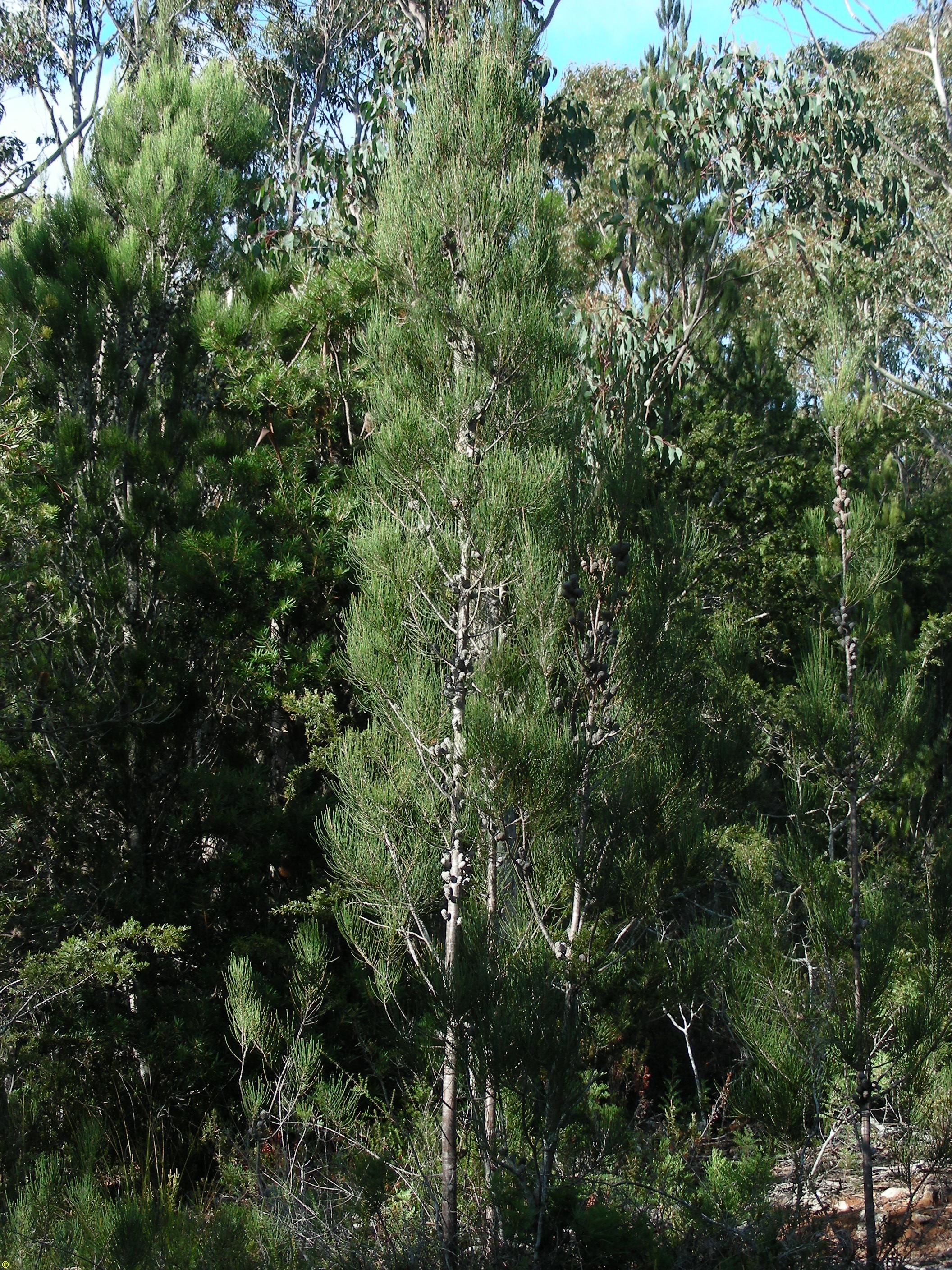Scientific Name: Allocasuarina duncanii Endemic Having a natural distribution confined to a particular geographic region
Common Name: conical sheoak
Family Classification (Clade): Eudicots
Family: Casuarinaceae
Threatened Species Status: Rare
Form Description: Very erect, narrow-crowned tree.
Height (m): 5 – 8
Flowers: Red-brown ‘tufts’ of stigmas.
Fruit: Woody cone. Seed a winged nut in cones. Female cones, up to 7cm and quite narrow.
Municipality
Plant Communities
Habitat Notes
Officially only known from a small population at Snug Plains. However a few other small populations are thought to exist in similar localities elsewhere in south-east Tasmania. It grows in heavy clay soils in moist forest communities dominated by Eucalyptus tasmaniensis.
Site Tolerance
Moist, Rocky, Shady
Soil Tolerance
Clay, Fertile, Well-drained
Frost Tolerance
Hardy
General Notes
First collected in l979 but it was not until 1994 that it was described and named. Bird attracting. Susceptible to browsing by hares and rabbits.
Propagation Calendar
-
Flowering Month
Jan Feb Mar Apr May Jun Jul Aug Sep Oct Nov Dec -
Seed Collecting Month
Jan Feb Mar Apr May Jun Jul Aug Sep Oct Nov Dec -
Sowing Month
Jan Feb Mar Apr May Jun Jul Aug Sep Oct Nov Dec -
Cutting Month
Jan Feb Mar Apr May Jun Jul Aug Sep Oct Nov Dec
Propagation Method
Seed Information
Seed Collection
Pick greyish cones from shrub, dry in paper bags to open. Sieve seed to isolate. Female allocasuarinas often carry ripe or ripening fruit at most times of the year.
Seed Treatment Method
Smoke Smoke treatment improves germination in some species. Smokey products, e.g. smokey vermiculite, can be purchased and applied to the sown seed, or sown seeds can be treated directly with smoke from a source such as a drum with a fire and hose.
Seed Treatment Notes
Seeds lose viability quickly once released from the cone. Seed should be sown fresh or stored at 3-5°C to maintain long term viability. Seedlings are usually quick growing.
Germination Time
10-45 days
Cutting & Division Information
Can be grown from cuttings of semi-hard wood. Coppice shoots taken from cut stumps or damaged plants will strike readily. Allocasuarinas have a symbiotic relationship with nitrogen-fixing root actinomycetes (Frankia sp). Inoculating potting soil with divots taken from beneath mature plants may be beneficial.
